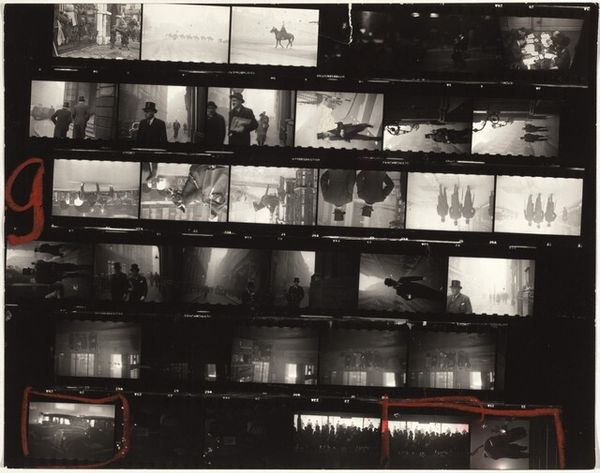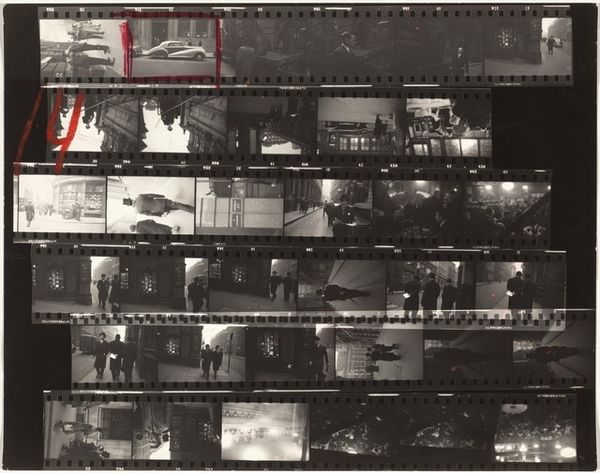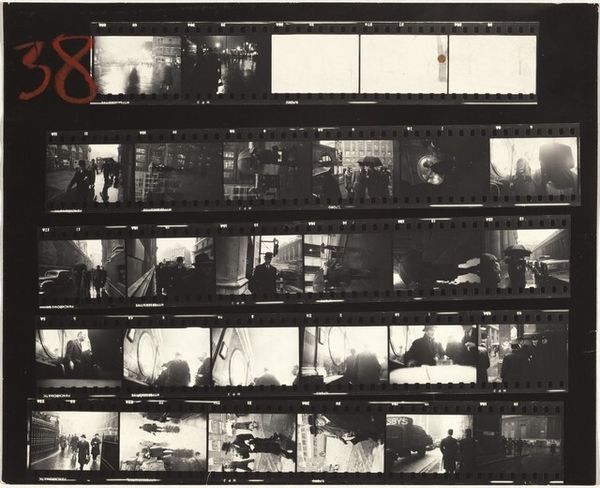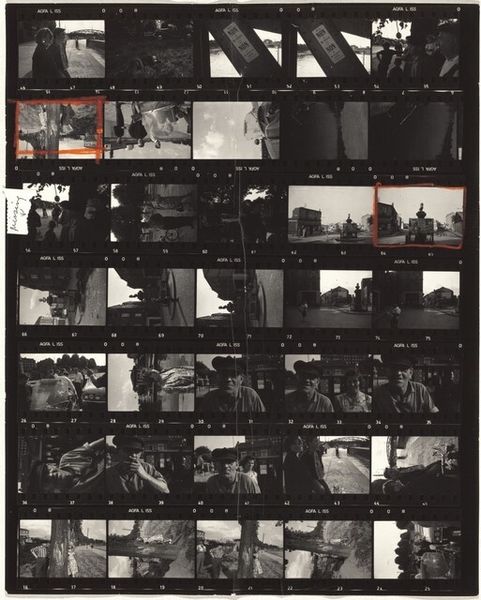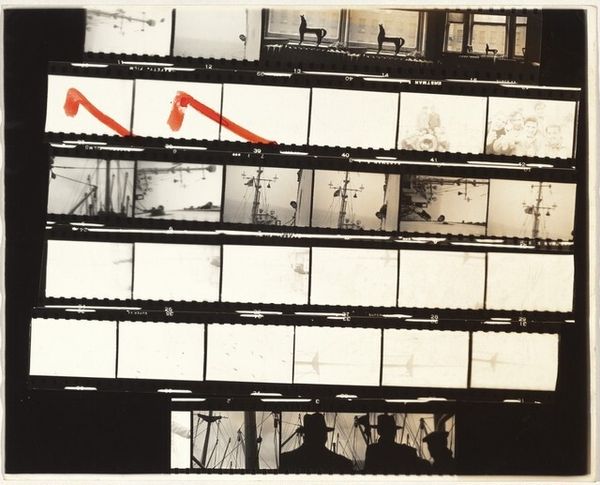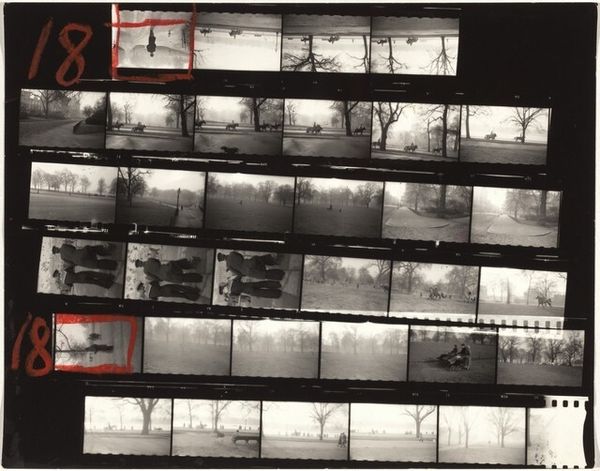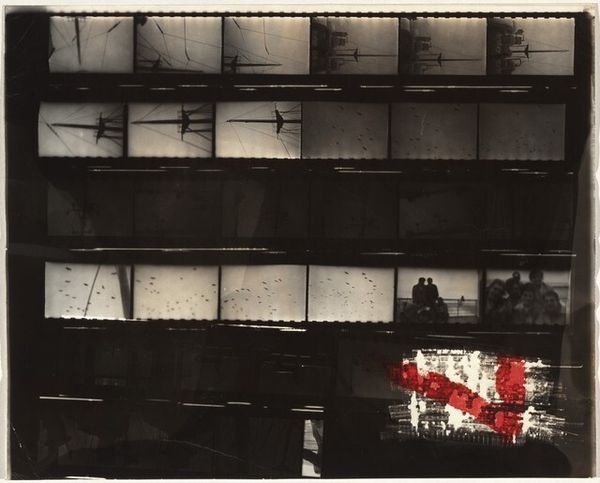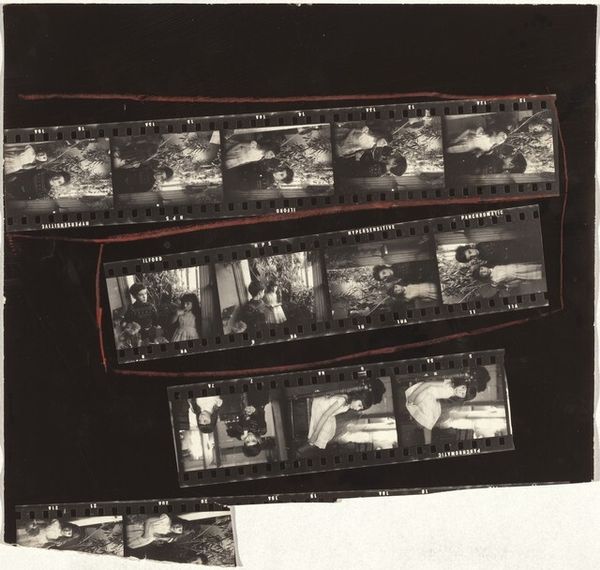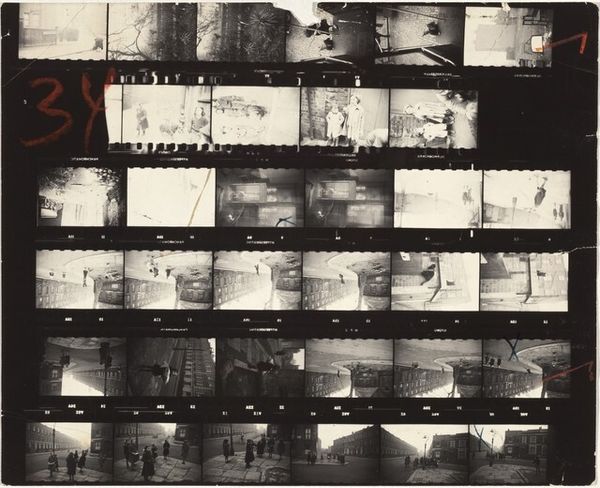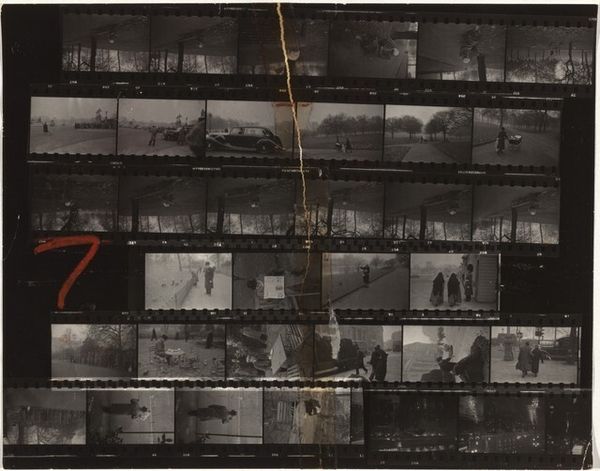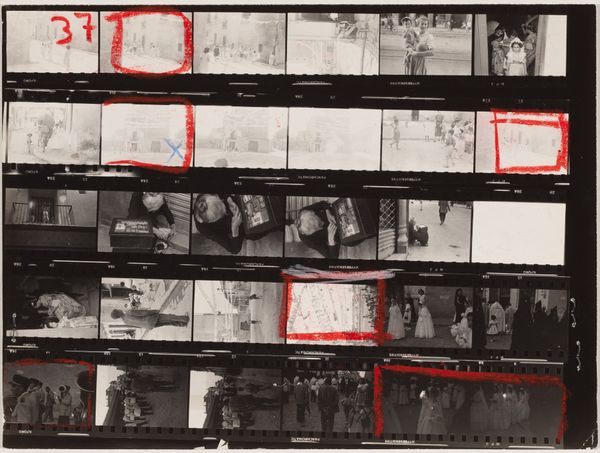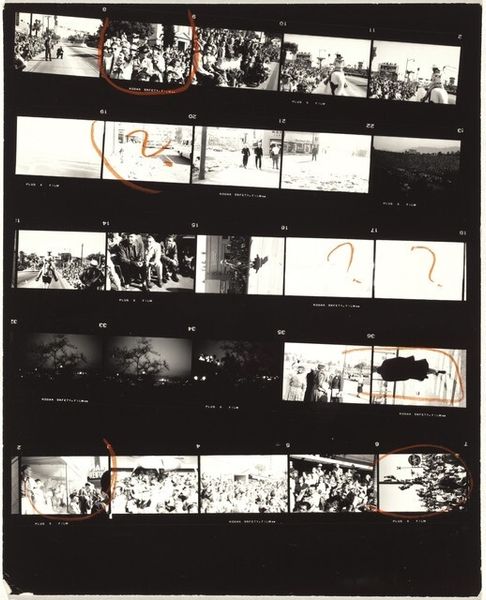
Dimensions: overall: 20.3 x 25.8 cm (8 x 10 3/16 in.)
Copyright: National Gallery of Art: CC0 1.0
Curator: This is "London 3" by Robert Frank, likely created between 1952 and 1953. Editor: My first impression is of fragmented memories. The rough edges of the film strips, the contrast between the dense blacks and stark whites—it evokes a feeling of incomplete narratives. Curator: Absolutely. Frank was known for his raw, often unflinching portrayal of post-war society. The work being gelatin silver print, and using photomontage is evidence of Frank's work being aligned with conceptual art, as well as rooted in street photography as a means of observation. He challenges conventional notions of photographic beauty. Editor: Indeed. Observe how the film strips are arranged—layered, cut, and marked with what appears to be red pencil. These markings guide us, highlighting certain frames. The composition breaks from traditional notions of perspective and framing. We find interest not only in what Frank photographed, but in his technique. Curator: It's essential to remember the socio-political context in which this piece emerged. The work presents us with an introspective view of the London Frank saw through his outsider's lens as a Jewish immigrant, during a period of both recovery and underlying tensions of Cold War anxieties. This layered narrative pushes back on sanitized representations of London's postwar recovery. Editor: I find the deliberate roughness fascinating. The high contrast and grain lend a sense of immediacy—as if we're glimpsing fleeting moments ripped from a larger context. Even in a singular shot that's surrounded by many others, it shows what the artist finds most impactful with each individual photo. It speaks to Frank's unique eye and photographic style that really does challenge those conventional notions of composition, especially with street photography at the time. Curator: Frank’s style serves to unearth the complex dynamics between the individual and society—creating something like a time capsule of a city undergoing great transformation, where old empires clash with a rising counterculture in music and fashion, something of which many groups felt ostracized. Editor: His intentional inclusion of what would normally be cropped out invites me to consider the choices behind artistic creation and gives new context for other photographs being taken during this time in street and documentary styles. The materiality directs us to understand it's more than a reproduction of what his eyes saw, but about the artist's perspective as well. Curator: Precisely. It underscores that photography, like any other artistic endeavor, is a subjective interpretation of the world, framed by personal history and ideological underpinnings. Editor: Considering those ideas around photographic intention brings me to see how it resonates powerfully—forcing viewers to engage not just with its surface but with the historical conditions. Curator: Exactly—to not just see but to understand, question, and empathize with this narrative is what makes the work timeless.
Comments
No comments
Be the first to comment and join the conversation on the ultimate creative platform.
